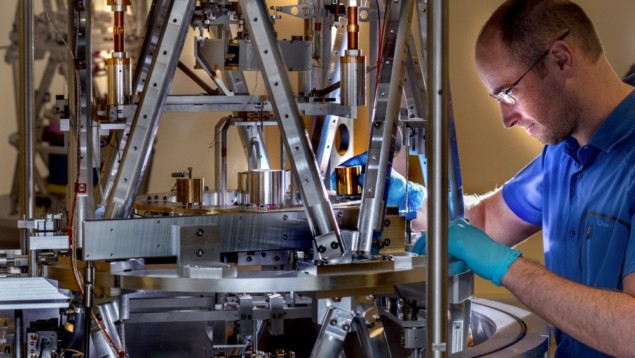
The redefinition of four units of the International System of Units (SI) will come into effect on Monday 20 May meaning that all seven base units are now based on fundamental physical constants. The kilogram, the ampere, the kelvin and the mole are now defined in terms of physical constants rather than an object or phenomenon. The decision to redefine of the four SI base units was taken in November 2018 when metrologists and policy-makers from 60 countries around the world met at the General Conference on Weights and Measures in Versailles, France. The change will now become a reality on 20 May to mark World Metrology Day.
There are seven base units of the SI: the second, metre, kilogram, ampere, kelvin, mole and candela. Some have long been based on physical constants. The second, for example, is set as 9,192,631,770 times the period of the radiation corresponding to the transition between the two hyperfine levels of the ground state of the caesium-133 atom. The metre, meanwhile, has been defined since 1983 as the length of the path travelled by light in vacuum during a time interval of 1/299,792,458 seconds.
The biggest change is to the kilogram, which was set by a 143-year-old platinum alloy cylinder, dubbed “Le Grand K” housed in the International Bureau of Weights and Measures (BIPM) in Paris. The kilogram is now defined in terms of the Planck constant, h, which has been measured with extraordinary precision in recent years. Its agreed value will be set as 6.626,070,15 × 10-34 kg m2 s–1, with researchers able to make precise mass measurement using equipment such as the Kibble balance.
Universal constants
“The redefinition of the kilogram may seem like a small change, but it will have an enormous impact on science,” says Ian Robinson from the UK’s National Physical Laboratory. “There will be no change to the mass scale currently used in trade and industry, but by using a universal constant of nature to ensure the long-term stability of the kilogram, we are both reunifying the SI and setting the stage for robust, reliable science that could pave the way for new ideas and inventions.” SI gets a makeover
The ampere, meanwhile, will now be set by the elementary electrical charge, e, which is given as 1.602,176,634 × 10-19 when expressed in coulombs. The kelvin is defined by taking the fixed numerical value of the Boltzmann constant k to be 1.380,649 × 10-23 when expressed in the unit J K-1 . Finally, the mole is defined as the amount of substance with exactly 6.02,214,076 × 1023 elementary entities. This number is the fixed numerical value of the Avogadro constant, NA, when expressed in the unit mol-1.



